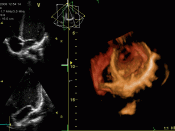The article for my discussion was chosen from the Journal of Biopharmaceutical Statistics. The authors are Ahn, Chul and Sin-Ho Jung.
Sample size calculation is an important component at the design stage of clinical trials. What is being investigated by these two scholars are the implications of dropouts for the sample size estimates in testing differences in the rates of changes produced by two treatments in a randomized parallel- groups repeated design. Based on my findings from the article, statistical models for calculating sample sizes for repeated measurement design often fail to take into account the impact of dropouts correctly. Jung and Ahn. Beliefs send one looking at the GEE method for comparing slopes in repeated measurements data. After careful review of the equation, and making needed adjustments to the sample size based on the type of study or trial being conducted many researchers have adapted to the generalized estimated equation (GEE) method to be able to fill the missing data so it can be included in their studies.
Jung and Ahn report that Missing data tends to attenuate the power of tests for determining differences in rates of changes across time in a repeated measurement design. Statistical models for calculating sample sizes in repeated measurement studies often fail to incorporate the negative impact of missing data on the power. However if one were to incorporate the method used by Jung and Ahn it would eliminate the problem of the missing data from the dropouts. The method they use is as follows, excerpted from the article Journal of Biopharmaceulical Siaiisiici, 15: 33-41, 2005Jung and Ahn (2003) present a method to estimate the sample size for comparing the rate of changes in repeated measurements data using GEE. Patel and Rowe (1999) propose a sample size formula for...


